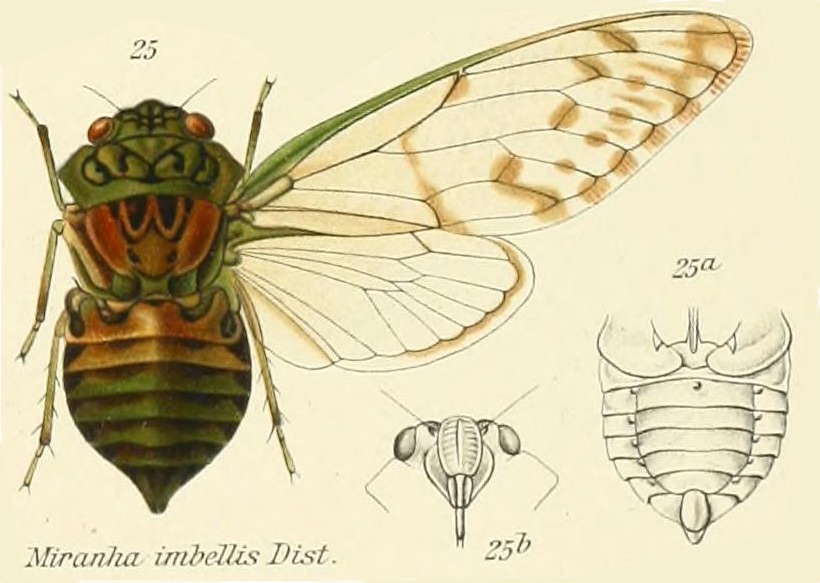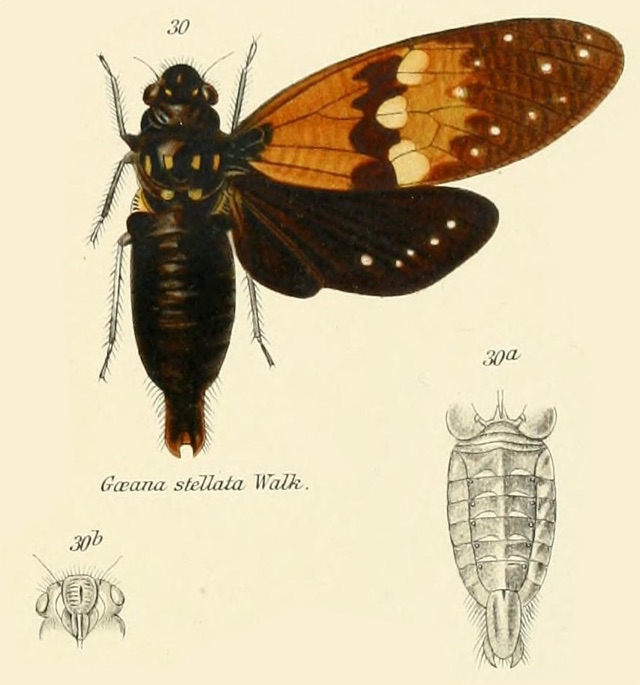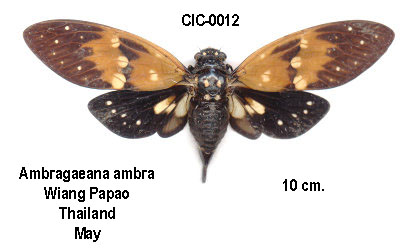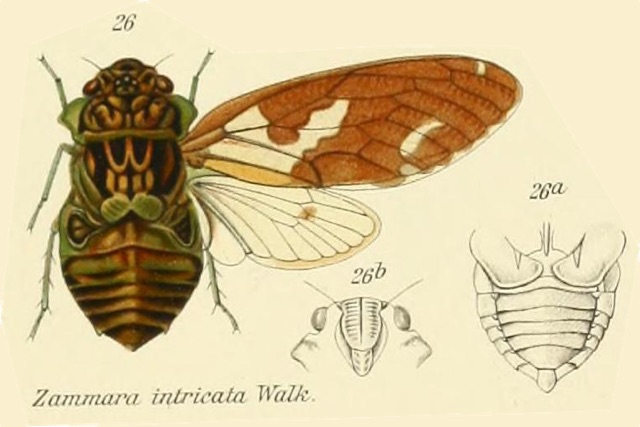Platypleura polydorus (Walker, 1850). Found in Sub-Saharan, West, South and East Africa. Platypleura has a remarkable, angular pronotal collar like other members of the Platypleurini tribe.
Scientific classification:
Family: Cicadidae
Subfamily: Cicadinae
Tribe: Platypleurini
Genus: Platypleura
Species: Platypleura polydorus (Walker, 1850)
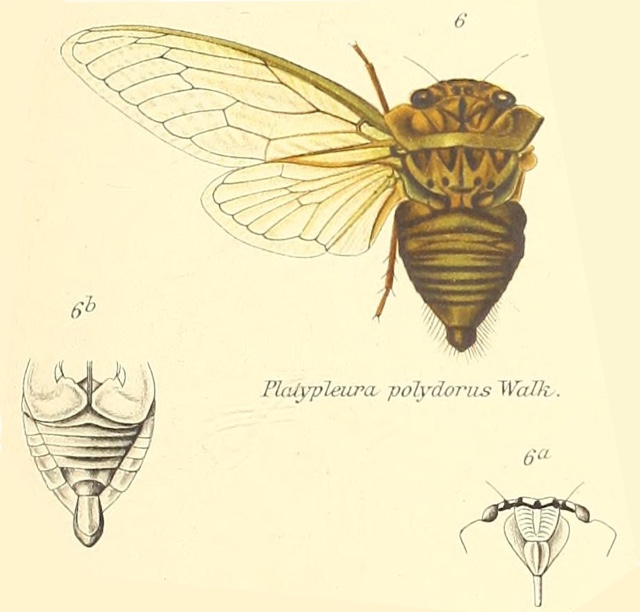
Platypleura genus description by W. L. Distant:
Characters. — Body robust. somewhat short; abdomen in male about as long as space between apex of head and base of cruciform elevation; head broad, truncate anteriorly, including eyes a little or scarcely broader than base of mesonotum, ocelli about twice and sometimes thrice the distance from eyes as from each other, face moderately convex not prominent above; pronotum with the lateral margins ampliated or laminately medially angulate ; anterior femora not prominently spined; metasternum with a Central elevated plate-like process, which is centrally sulcated and posteriorly somewhat sinuately truncate; tympana practically concealed by the tympanal flaps or coverings; opercula in male short, broad, their apices more or less convexly rounded ; tegmina and wings either hyaline or more or less opaquely coloured, tegmina with the basal cell a little longer than broad, the coastal membrane only moderately dilated or arched at base, apical areas eight in number. Oxypieura, Amyot & Serville, merely includes species with hyaline non-opaque tegmina and wings: Pcecilopsaltria, Stal was regarded as distinct from Platypleura by the slightly greater width of the head including eyes ; this form being more dominant in the Oriental Region, while the character of typical Platy pleura is a marked feature in the Ethiopian species.
References:
- The illustration and genus description comes from the journal Genera Insectorum, and a specific article from 1913 by W. L. Distant titled Homoptera. Fam. Cicadidae, Subfam, Cicadinae. Read it on the Biodiversity Heritage Library website.
- Species name information/verification comes from Allen Sanborn’s Catalogue of the Cicadoidea (Hemiptera: Auchenorrhyncha).
